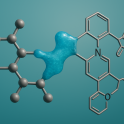|

The OTAVA MolGluesLike Compounds Library is a scientifically curated collection of 2750 small molecules designed to enable the discovery and development of molecular glues — a groundbreaking modality in drug discovery that stabilizes or induces protein-protein interactions (PPIs).
These specialized compounds have the potential to redefine therapeutic strategies by targeting previously “undruggable” proteins, offering exciting opportunities in areas such as oncology, immunology, and neurodegenerative disease research.
What Are Molecular Glues?
Molecular glues are monovalent small molecules that can promote ternary complex formation by either:
-
Inducing neomorphic PPIs (bringing together two proteins that do not typically interact), or
-
Stabilizing existing, weak PPIs (reinforcing biologically relevant complexes).
Their ability to modulate protein function — by mechanisms such as targeted protein degradation or allosteric pathway tuning — makes them powerful tools in drug discovery, especially for targets lacking classical ligand-binding pockets.
Library Design and Scientific Excellence
Our MolGluesLike Library has been meticulously assembled using a multi-parameter optimization strategy that ensures:
-
High biological relevance
-
Excellent drug-like properties
-
Broad chemotype coverage for PPI modulation
1. Rigorous Filtering and Compound Integrity
-
PAINS and reactive group removal to eliminate false positives and unstable compounds.
-
Frequent hitter exclusion: Compounds with known non-specific activity against kinases, phosphatases, or proteases have been removed to increase screening accuracy.
2. Optimized Physicochemical Properties
-
Topological Polar Surface Area (TPSA): 20 – 110 Ų
-
Hydrogen Bond Donors (HBD): Fewer than 3
-
Calculated LogP (cLogP): Less than 6
-
Molecular Weight (MW): Below 600 Da
These parameters align with guidelines for cell permeability, solubility, and favorable pharmacokinetics — critical for intracellular PPI targeting.
3. Advanced 3D Descriptor Profiling
Our selection process integrates 3D molecular descriptors to prioritize compounds with geometry favorable for PPI interfaces:
-
Plane of Best Fit (PBF)
-
Normalized Moment of Inertia (NMI)
-
Flexibility, globularity, and sphericity This ensures spatial compatibility with concave and planar surfaces often found in protein interfaces — ideal for glue-mediated binding.
4. Cell Penetration and Biological Viability
All compounds in the library are selected for intracellular accessibility, a fundamental requirement for successful modulation of protein-protein interactions in live cells.
5. Structural and Scaffold Diversity
To support wide-ranging research applications, the library features high scaffold diversity, enabling exploration across various PPI interfaces, protein families, and therapeutic mechanisms.
Applications and Opportunities
-
Targeted Protein Degradation (TPD)
-
Oncology drug discovery and immune modulation
-
Neurodegenerative disease models
-
Chemical biology and functional proteomics
-
Exploration of novel E3 ligase biology and PPI networks
This library provides an exceptional platform for both phenotypic screening and rational glue discovery, including CRBN- and DCAF-based degraders, non-degradative stabilizers, and emerging self-associating glues.
Collaborate with Us
Whether you're focused on high-content screening, rational PPI targeting, or next-generation degraders, our team can help you:
-
Access the full MolGluesLike Library
-
Customize compound subsets based on your biological targets
-
Design collaborative screening campaigns tailored to your discovery pipeline
⇒ Contact us today to accelerate your research with a world-class molecular glue library
All the compounds are in stock, cherry-picking is available.
The libraries (DB, SD, XLS, PDF format) as well as the price-list are available on request. Feel free to contact us or use on-line form below to send an inquiry if you are interested to obtain this library or if you need more information.
Request Your Library Today! Fill out the form:
References:
-
An, J., & Zhang, X. (2024). Crbn-based molecular glues: Breakthroughs and perspectives. Bioorganic & Medicinal Chemistry. https://doi.org/10.1016/j.bmc.2024.117683
-
Clues to molecular glues. (2022). Current Research in Chemical Biology, 2, 100018. https://doi.org/10.1016/j.crchbi.2021.100018
-
Dewey, J. A., Delalande, C., Azizi, S.-A., Lu, V., Antonopoulos, D. A., & Babnigg, G. (2023). Molecular glue discovery: Current and future approaches. Journal of Medicinal Chemistry. https://doi.org/10.1021/acs.jmedchem.3c00449
-
Dong, G., Ding, Y., He, S., & Sheng, C. (2021). Molecular glues for targeted protein degradation: From serendipity to rational discovery. Journal of Medicinal Chemistry, 64(15), 10606–10620. https://doi.org/10.1021/ACS.JMEDCHEM.1C00895
-
Domostegui, A., Nieto-Barrado, L., Perez‐Lopez, C., & Mayor-Ruiz, C. (2022). Chasing molecular glue degraders: Screening approaches. Chemical Society Reviews, 51(23), 10387–10401. https://doi.org/10.1039/d2cs00197g
-
Holdgate, G. A., Bardelle, C., Berry, S. K., Lanne, A., & Cuomo, M. E. (2023). Screening for molecular glues – challenges and opportunities. SLAS Discovery. https://doi.org/10.1016/j.slasd.2023.12.008
-
Jiang, W., Jiang, Y., Luo, Y., Qiao, W., & Yang, T. (2023). Facilitating the development of molecular glues: Opportunities from serendipity and rational design. European Journal of Medicinal Chemistry, 258, 115950. https://doi.org/10.1016/j.ejmech.2023.115950
-
Konstantinidou, M., & Arkin, M. R. (2024). Molecular glues for protein-protein interactions: Progressing toward a new dream. Cell Chemical Biology. https://doi.org/10.1016/j.chembiol.2024.04.002
-
Li, F., Aljahdali, I., & Ling, X. (2022). Molecular glues: Capable protein-binding small molecules that can change protein–protein interactions and interactomes for the potential treatment of human cancer and neurodegenerative diseases. International Journal of Molecular Sciences, 23(11), 6206. https://doi.org/10.3390/ijms23116206
-
Rui, H., Ashton, K., Min, J., Wang, C. Y., & Potts, P. R. (2023). Protein–protein interfaces in molecular glue-induced ternary complexes: Classification, characterization, and prediction. RSC Chemical Biology, 4(1), 31–43. https://doi.org/10.1039/d2cb00207h
-
Sasso, J. M., Tenchov, R., Wang, D., Johnson, L. S., Wang, X., & Zhou, Q. (2022). Molecular glues: The adhesive connecting targeted protein degradation to the clinic. Biochemistry, 61(10), 1044–1057. https://doi.org/10.1021/acs.biochem.2c00245
-
Schreiber, S. L. (2024). Molecular glues & bifunctional compounds: Therapeutic modalities based on induced proximity. ChemRxiv. https://doi.org/10.26434/chemrxiv-2024-q1n61
-
Shi, H. (2024). Molecular glues and molecular glue degraders: Mechanisms, design, and therapeutic applications. Transactions on Materials, Biotechnology and Life Sciences. https://doi.org/10.62051/r1m5q711
-
Wang, B., Cao, S., & Zheng, N. (2024). Emerging strategies for prospective discovery of molecular glue degraders. Current Opinion in Structural Biology, 84, 102811. https://doi.org/10.1016/j.sbi.2024.102811
-
Weagel, E. G., Foulks, J. M., Siddiqui, A., & Warner, S. L. (2022). Molecular glues: Enhanced protein-protein interactions and cell proteome editing. Medicinal Chemistry Research, 31, 587–602. https://doi.org/10.1007/s00044-022-02882-2
-
Zhang, R., Zheng, Y., Xiang, F., & Zhou, J. (2024). Inducing or enhancing protein-protein interaction to develop drugs: Molecular glues with various biological activity. SSRN. https://doi.org/10.2139/ssrn.4846233
|
 HOME
HOME ABOUT
ABOUT
 SERVICES
SERVICES
 PRODUCTS
PRODUCTS
 Targeted Libraries
Targeted Libraries
 Biochemicals
Biochemicals
 RESEARCH
RESEARCH
 DOWNLOADS
DOWNLOADS ORDERING
ORDERING
 CONTACTS
CONTACTS


